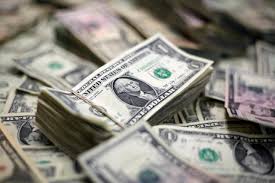Dollar holds near 32-peak versus yen despite intervention risks; sterling licks wounds

The dollar held close to a 32-year peak versus the yen on Wednesday while edging up from a two-week trough against a basket of major peers, underpinned by the prospect of aggressive U.S. Federal Reserve interest rate hikes.
Sterling consolidated in the middle of its trading range this week following the Bank of England’s decision not to sell any longer-duration gilts this year, while denying a Financial Times report that it would delay quantitative tightening. The euro slipped back from near a two-week top.
The dollar pushed as high as 149.395 yen overnight for the first time since August 1990, before last trading at 149.305 in the Asian session.
Traders are on high alert for the Ministry of Finance and Bank of Japan to step into the market again, as the currency pair pushes toward the key psychological barrier at 150. A cross of 145 a month ago spurred the first yen-buying intervention since 1998.
Japanese Finance Minister Shunichi Suzuki said on Wednesday that he was checking currency rates “meticulously” and with more frequency, local media reported.
The dollar index — which measures the currency against six peers including the yen, sterling and euro — added 0.2% to 112.19, after dropping to the lowest since Oct. 6 at 111.76 overnight. It marked a multi-decade peak at 114.78 at the end of September.
The greenback, which currently reigns as the safe-haven currency of choice, has sagged this week amid the bear rally in equities globally following some upbeat earnings.
But underlying support continues to come from market pricing for two more 75 basis point hikes from the Fed this year as it focuses on red-hot inflation, even at the risk of sparking a recession.
Fiscal uncertainty in Britain is also clouding the outlook for markets globally.
“We doubt that this is more than a modest pause in the dollar’s bull run,” said Sean Callow, a currency strategist at Westpac in Sydney, who expects a retest of last month’s peak into November.
On the yen, “intervention risk remains present, since the MOF has already crossed the Rubicon [but] its purpose is surely only to limit the scale of speculative positioning rather than driving a sustained reversal,” Callow said.
“A number as round as 150 will probably take some work to break short-term,” but given the BOJ’s position as the only developed-market central bank still pursuing a negative interest rate policy, “it’s hard to see why the pair wouldn’t extend into the 150-155 area,” Callow added.
Meanwhile, sterling was little changed at $1.1318, licking its wounds after a 0.34% decline in the previous session. The currency initially climbed on Tuesday following a Financial Times report that the Bank of England would delay quantitative tightening, only to slide after the Bank called the article “inaccurate.”
The BOE said it would start selling some of its huge stock of British government bonds from Nov. 1, but would not sell this year any longer-duration gilts that have been at the center of market volatility in the wake of the government’s “mini budget” fiasco.
Commonwealth Bank of Australia predicts the British pound will remain under pressure.
“Elevated energy prices and rapid monetary policy tightening by the Bank of England will soon see the UK economy fall back into recession,” Kim Mundy, a strategist at CBA, wrote in a client note, forecasting a full percentage point hike from the BOE next month.
“Relative economic performance will remain a weight on GBP,” leading the currency “to underperform despite the recent easing in fiscal uncertainty,” she said.
The euro sank 0.24% to $0.9836, retreating from Tuesday’s high of $0.98755, a level last seen on Oct. 6.
Economists in a Reuters poll predict another 75 basis-point rate hike from the European Central Bank on Thursday of next week.
The New Zealand dollar remained elevated following Tuesday’s blowout consumer price data, which raises expectations for continued aggressive tightening by the Reserve Bank. The currency last traded 0.08% higher at $0.56905, close to the previous session’s two-week high of $0.5719.
The Aussie changed hands at $0.6311, little changed from Tuesday.

